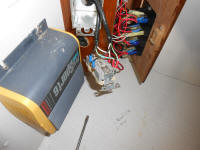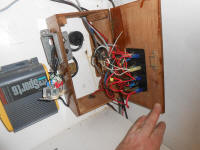
110 Cookson Lane | Whitefield, ME 04353 | 207-232-7600 | tim@lackeysailing.com
Khasanah | Saturday, March 23, 2013
After various discussions regarding the course of the project in and around the owner's traveling schedule, we eventually determined a work list based on my earlier inspection. The most significant project to undertake would be the recoring of the little coachroof, a job I'd start in the near future.
With limited time on hand this day, I decided to begin some of the smaller jobs on the list, starting with installing a main AC shore power breaker. A pervious owner had installed a simple shorepower system to power a battery charger on board, and had wired the system through a normal household outlet, which more or less served as a junction box. With no need for the outlet, but a desire for a safer and more proper system and based on the results of a prepurchase survey, the owner requested that I install a breaker instead of the outlet.
After I removed the outlet, I installed new ring terminals on the existing wiring, and made the connections to a 30-amp AC main breaker panel.
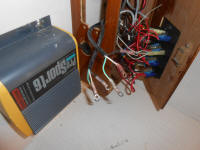
It was only after I'd made the connections and was preparing to install the breaker panel that I noticed that all or most of the wires' insulation was sliced through right where the outside cable sheathing had been cut by a previous installer. This is noticeable in the photo above, particularly on the white wire towards the middle of the photo, right next to the black sheathing.
I couldn't leave it like that, with bare wiring showing through, so I cut off the new wire ends I'd just installed, then cut back the sheathed cable a bit further so I could get back to better wire; this meant that I'd also have to extend the cables, since they were now too short to be practicable. This was about when I noticed that the sheathed cable exiting the back side of the cockpit receptacle was loose, and pulled right out of the terminals there.
So I replaced the entire cable from the cockpit receptacle, removing the outlet so I could access the screw terminals and secure the new wire within. From here, the remainder of the wiring job went more smoothly, and I soon had the new wires connected to the panel and ready for final installation.
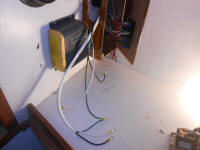

There was one more hiccup on the way. While the panel was a good fit in the original outlet hole in terms of covering the opening, I soon found that there was no wood behind the screw locations, so no way to secure the panel. To get around this, I prepared little squares of plywood which I glued in place in the corners, after which I could finally secure the panel in place. Not as simple a job as I'd anticipated, but in the end the system would be better for it.
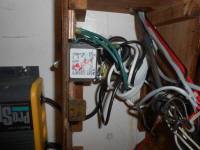
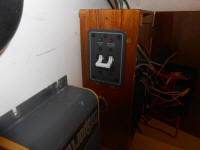
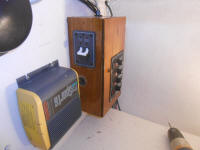
The wiring took longer than I'd planned, leaving me with little time before I had to depart for other commitments, so I filled the time by removing the old name and hailport from the transom in preparation for a new transom surface and name. The transom featured a couple old holes that had been marginally repaired, and the owner was anxious to try for a wood-grained transom, in part to hide the old repairs, and in part for its appearance and uniqueness. With a solid wood installation seeming far too labor intensive and expensive to justify, the owner found a 3M woodgrain vinyl product--mainly intended for the automotive industry--that looked like a high-quality product, and after review I thought it looked interesting too, and worth a try in this instance, albeit with numerous caveats since it was a rather unorthodox idea, and something I'd never tried before. I ordered the material, and looked forward to trying it out upon arrival
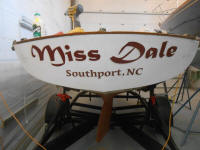

With the transom cleaned up and ready for some minor repair work so the old holes and other minor divots wouldn't adversely affect the new surface, I moved on to the hull, which we'd decided to clean up by buffing, since the original gelcoat--while old--was still in decent condition, with no major issues or interruptions. I had enough time to work my way down about half of the starboard side.
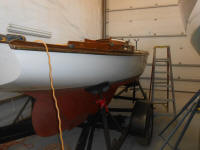
Total Time on This Job Today: 2 hours
